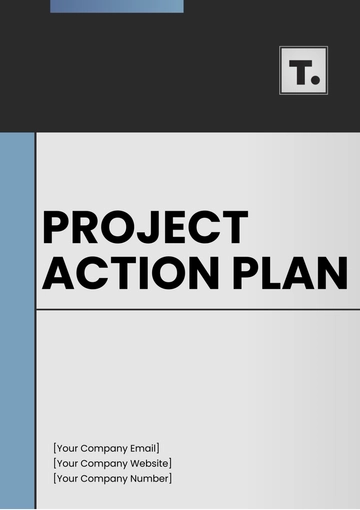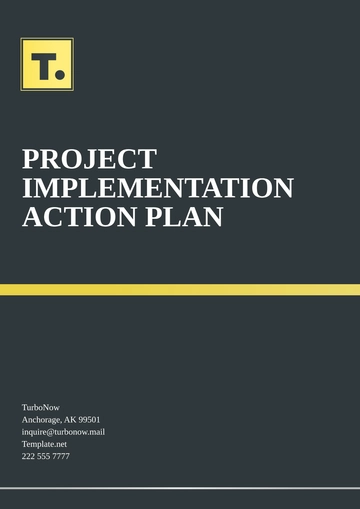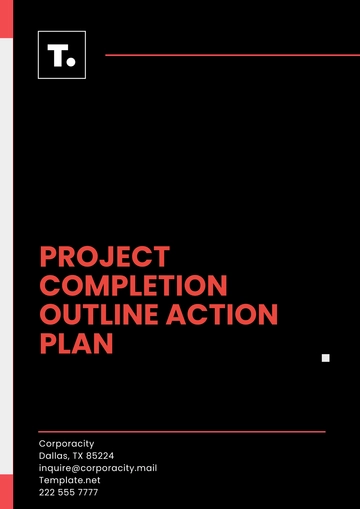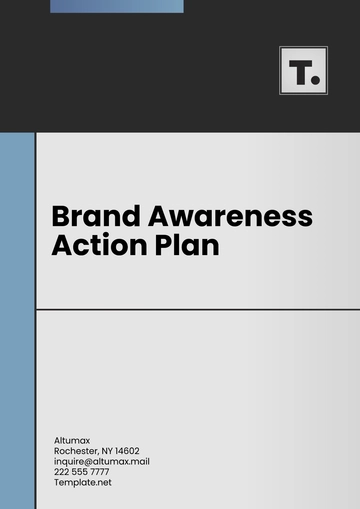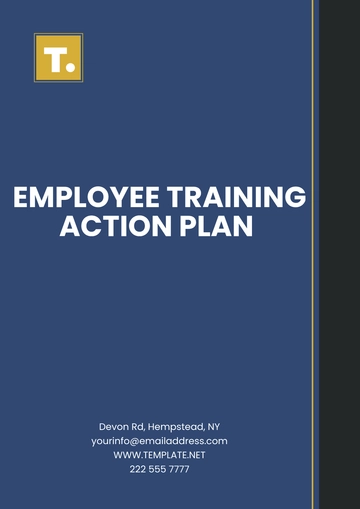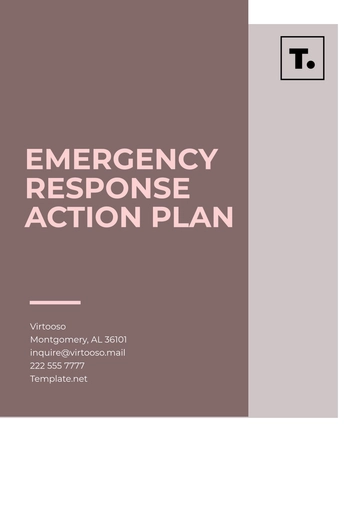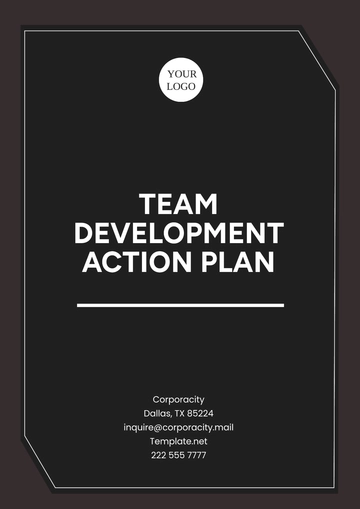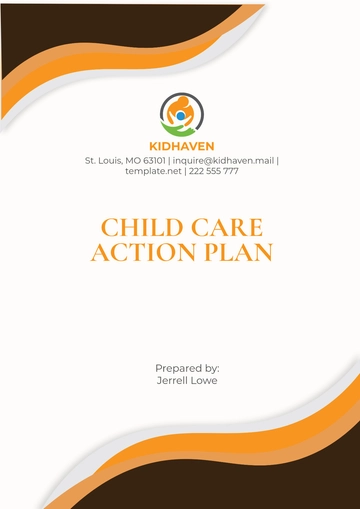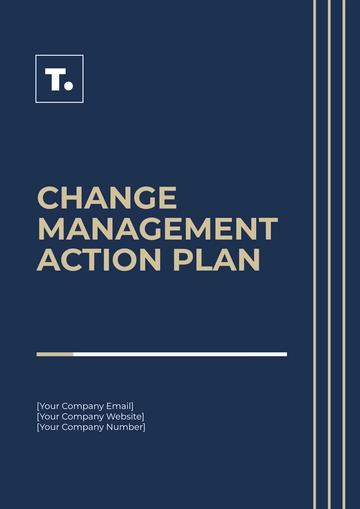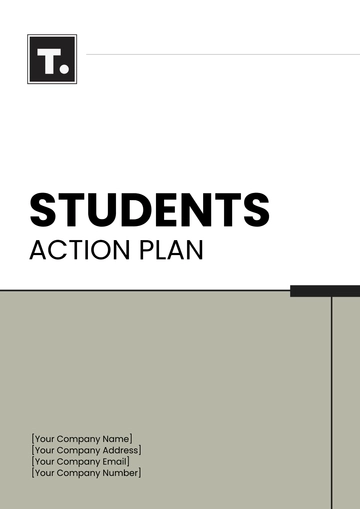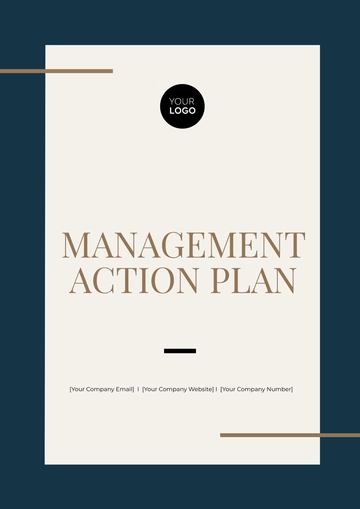Free Cleaning Services Emergency Action Plan
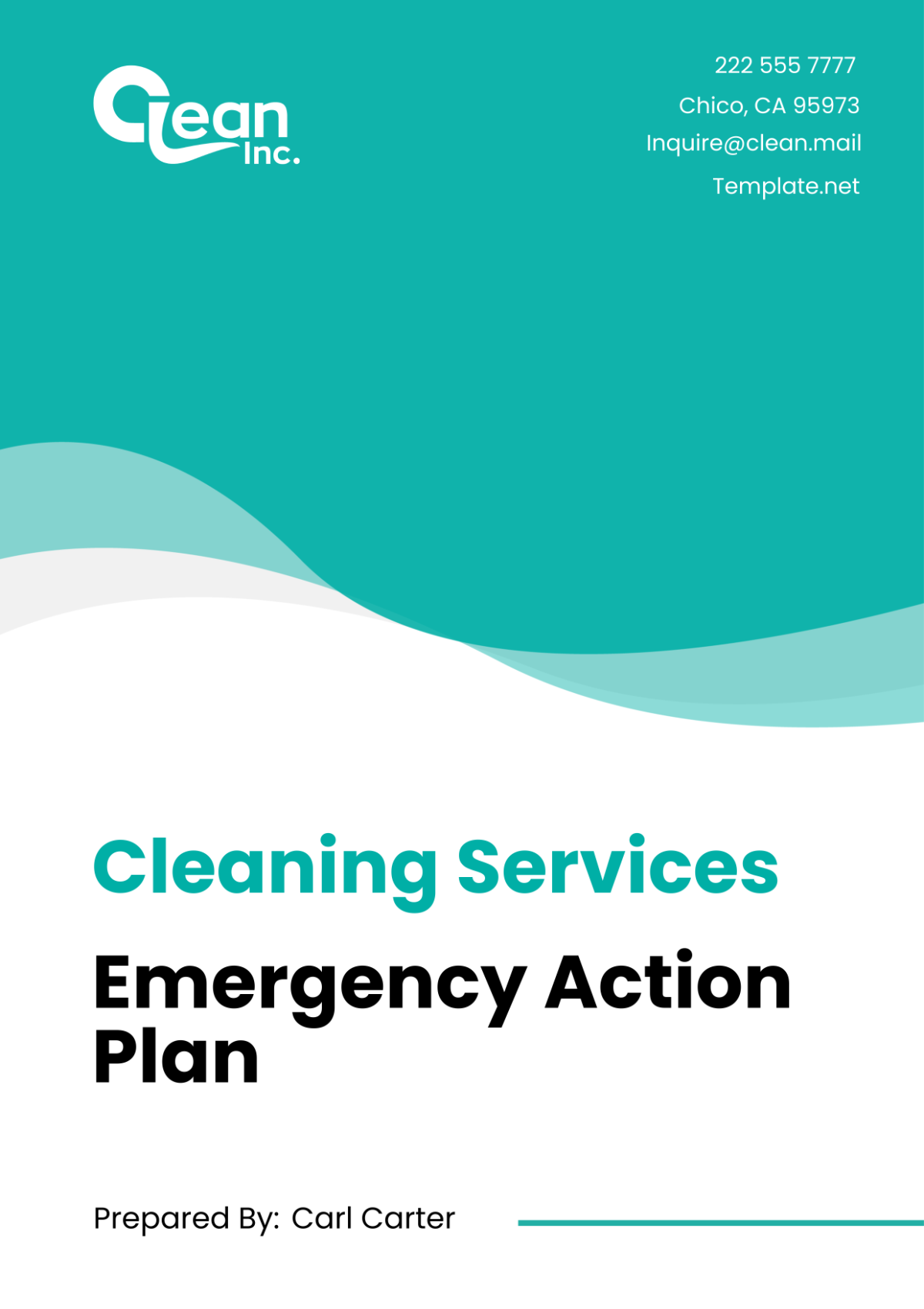
I. Introduction
This Emergency Action Plan (EAP) has been developed to ensure the safety and security of all employees, clients, and properties associated with [Your Company Name]. It outlines procedures for responding to various emergency situations, including natural disasters, fires, medical emergencies, and hazardous material spills. This document is in compliance with Occupational Safety and Health Administration (OSHA) standards.
A. Purpose and Scope
The purpose of this EAP is to establish a coordinated response to emergencies to minimize injuries, property damage, and downtime. The scope of this plan covers all operations and locations managed by [Your Company Name].
II. Emergency Response Team
The Emergency Response Team (ERT) forms the cornerstone of [Your Company Name]'s emergency preparedness and response strategy. The ERT is tasked with leading the execution of the Emergency Action Plan (EAP), ensuring swift and organized responses to various emergency scenarios to safeguard employees, clients, and property. The composition, roles, responsibilities, and contact information of the ERT are detailed below:
B. Composition
The ERT is composed of members selected based on their expertise, leadership qualities, and readiness to manage emergency situations. Each member undergoes rigorous training in emergency response protocols and safety procedures. The team includes roles such as the ERT Leader, Safety Officer, Logistics Coordinator, and Communications Officer, among others.
C. Roles and Responsibilities
Role | Responsibilities |
|---|---|
ERT Leader | Oversees the overall emergency response efforts, makes critical decisions, and coordinates with external emergency services. |
Safety Officer | Assesses hazards, ensures the safety of all personnel during emergencies, and advises on health and safety protocols. |
Logistics Coordinator | Manages supplies, equipment, and resources necessary for emergency response and recovery operations. |
Communications Officer | Facilitates internal and external communications, including emergency alerts to employees and status updates to stakeholders. |
D. Contact Information
Effective communication is essential for efficient emergency response. Below is the contact information for key ERT members, ensuring they can be reached without delay during an emergency.
Name | Role | Contact Number | Email Address |
|---|---|---|---|
[Name] | ERT Leader | [Number] | [Email] |
[Name] | Safety Officer | [Number] | [Email] |
[Name] | Logistics Coordinator | [Number] | [Email] |
[Name] | Communications Officer | [Number] | [Email] |
E. Training and Qualifications
ERT members are required to complete a comprehensive training program that includes, but is not limited to, First Aid and CPR, fire safety, hazardous materials handling, and crisis communication. Continuous education and training are mandated to maintain readiness and adapt to evolving emergency response practices.
F. Coordination with External Agencies
The ERT coordinates closely with local emergency services, health departments, and disaster response agencies to enhance the effectiveness of the EAP. This collaboration includes sharing plans, participating in joint drills, and establishing communication protocols to ensure seamless operation during emergencies.
G. Continuous Improvement
The performance of the ERT is evaluated after each emergency incident or drill to identify areas for improvement. Feedback is solicited from all participants to refine response strategies, update training programs, and enhance the overall efficacy of the EAP.
By defining clear roles, responsibilities, and processes within the Emergency Response Team, [Your Company Name] ensures a robust and efficient response mechanism is in place to manage emergencies effectively, minimizing impact and facilitating a swift return to normal operations.
III. Emergency Types and Procedures
This comprehensive section delineates the structured approach and specific actions [Your Company Name] Cleaning Services employees must take in response to various emergency situations. It encompasses protocols for fires, natural disasters, medical emergencies, and hazardous material spills, ensuring a well-coordinated and effective response to preserve safety and minimize risk.
H. Fire Emergency Procedures
In the event of a fire, immediate action is critical to ensure the safety of all personnel:
Immediate Evacuation: Prioritize safe and swift evacuation via the nearest exit. Remain calm and proceed quickly to avoid congestion. Follow the clearly marked evacuation routes posted throughout the facility.
Elevator Usage Prohibition: Elevators must not be used under any circumstances during a fire to avoid the risk of entrapment due to power loss or malfunction.
Assembly and Roll Call: All employees must gather at the designated muster point located a safe distance from the building. Supervisors will perform a roll call to ensure all personnel are accounted for. Wait for further instructions from the ERT or emergency services.
I. Natural Disaster Procedures
Natural disasters such as earthquakes and hurricanes require specific precautions and responses:
Earthquake Response: Adopt the "Drop, Cover, and Hold On" maneuver. Drop to your hands and knees, cover your head and neck with your arms, and if possible, take shelter under a sturdy piece of furniture. Stay indoors until the shaking stops and it is safe to exit.
Hurricane Preparedness: Secure or remove loose objects and equipment that could become projectiles. Windows should be boarded up or protected with storm shutters. Evacuate or move to a pre-determined safe area when instructed by local authorities.
Aftermath: Await instructions from emergency personnel or the ERT. Do not re-enter damaged buildings until they are deemed safe.
J. Medical Emergency Response
A prompt and efficient response can be crucial in a medical emergency:
Emergency Contact: Call [911] immediately to report the situation and provide specific details about the location and nature of the medical emergency.
First Aid: If qualified, provide basic first aid until emergency medical services arrive. Use the first aid kits located throughout the premises, clearly marked and easily accessible.
Handling the Injured: Avoid moving the injured person unless they are in immediate danger (e.g., fire, building collapse). If necessary, follow proper techniques to minimize further injury.
K. Hazardous Material Spill Response
Handling hazardous material spills requires caution and adherence to specific protocols to prevent harm:
Evacuation: Clear the area surrounding the spill to limit exposure. Use designated evacuation routes and avoid contact with the spilled substance.
Notification: Immediately inform the ERT Leader of the spill, including the type of material (if known) and the spill location. This information is critical for a tailored response.
Containment and Cleanup: Only trained personnel equipped with the appropriate personal protective equipment (PPE) and spill kits should attempt containment and cleanup, following the detailed Hazardous Material Response Procedures. This includes securing the area, preventing the spread of the material, and disposing of the hazardous waste according to regulatory standards.
These detailed procedures ensure that [Your Company Name] Cleaning Services employees are well-prepared to respond effectively to a range of emergency situations, prioritizing safety, minimizing risks, and facilitating a coordinated recovery effort.
IV. Training and Drills
To ensure the effectiveness of the Emergency Action Plan (EAP) and to prepare [Your Company Name] Cleaning Services' employees for a swift and organized response to emergencies, a comprehensive training and drill schedule is rigorously maintained. This program is designed to enhance the readiness of our staff, familiarize them with emergency procedures, and ensure that they can perform their roles confidently under pressure.
A. Training Program
The training program encompasses a wide range of topics relevant to emergency preparedness, including but not limited to:
Basic First Aid and CPR: Empowering employees with the skills to provide immediate care in medical emergencies.
Fire Safety and Extinguisher Use: Teaching the proper use of fire extinguishers and understanding different types of fires and extinguishing agents.
Emergency Evacuation Procedures: Practicing the evacuation process, including identification of exits, muster points, and the role of floor wardens.
Hazardous Material Handling and Spill Response: Training specific personnel in handling, storage, and clean-up procedures for hazardous materials.
Natural Disaster Preparedness: Providing guidance on actions to take before, during, and after events such as earthquakes, hurricanes, or floods.
B. Drill Schedule
Drills are conducted regularly to test the effectiveness of the emergency procedures and the readiness of the employees. The schedule for drills is outlined below, ensuring that all scenarios are covered throughout the year.
Type of Drill | Frequency | Objective |
|---|---|---|
Fire Drill | Bi-annually | To practice evacuation procedures and the use of muster points. |
Earthquake Drill | Annually | To exercise the "Drop, Cover, and Hold On" protocol and evacuation if necessary. |
Emergency Evacuation Drill | Bi-annually | To test the effectiveness of evacuation procedures for various emergencies. |
Hazardous Material Spill Drill | Annually | For trained personnel to practice containment and clean-up procedures. |
First Aid Drill | Annually | To simulate medical emergencies where employees can practice first aid and CPR skills. |
C. Record Keeping and Evaluation
After each training session and drill, a detailed evaluation is conducted to assess the performance and identify areas for improvement. Feedback is collected from participants, and adjustments are made to the training content and emergency procedures as needed. Records of all training and drills, including attendance and evaluation results, are meticulously maintained for compliance purposes and to inform future training needs.
D. Continuous Improvement
The commitment to continuous improvement is integral to the training and drill program. [Your Company Name] is dedicated to staying abreast of the latest best practices in emergency preparedness and response. This includes regularly updating training materials, incorporating new technologies, and adjusting the EAP based on lessons learned from drills and real-life emergencies.
By investing in comprehensive training and regular drills, [Your Company Name] ensures that its employees are not only prepared to respond to emergencies effectively but also committed to the safety and well-being of all individuals in their care. This proactive approach to emergency preparedness is a key component of our company's commitment to excellence and safety.
V. Plan Review and Update
The Emergency Action Plan is a living document, subject to regular review and updates to ensure its effectiveness and relevance. The plan is meticulously evaluated on an annual basis or following any significant operational changes, adjustments in emergency response personnel, or after the occurrence of an emergency situation which tests the plan's efficacy.
A. Review Schedule
The EAP is scheduled for a comprehensive review on [Month Day, Year], and annually thereafter. This review includes assessing the current emergency procedures, communication protocols, training effectiveness, and the response outcomes of drills and actual emergency events.
B. Updating Process
Updates to the EAP will be conducted by a designated review committee, comprising members of the Emergency Response Team, human resources, and management. This process involves:
Analyzing feedback from employees and emergency responders.
Incorporating new safety regulations and best practices.
Updating contact information and responsibilities of ERT members.
Revising emergency procedures based on recent experiences or changes in the work environment.
C. Documentation and Approval
All revisions to the EAP will be documented, with changes clearly outlined. The updated plan must be approved by senior management to ensure compliance and effectiveness. Once approved, the revised EAP becomes the document in force.
D. Distribution
To ensure widespread accessibility and familiarity with the EAP, [Your Company Name] employs a comprehensive distribution strategy:
Physical Copies: Printed copies of the EAP are distributed to all employees and placed in easily accessible locations throughout all company premises, including break rooms and near exits.
Electronic Access: An up-to-date electronic version of the EAP is available on the company’s intranet, accessible to all employees at any time. Email notifications are sent to all staff members whenever the EAP is updated.
Orientation and Training: New employees receive a copy of the EAP as part of their orientation package and are briefed on its contents during initial training sessions.
VI. Conclusion
At [Your Company Name], the safety, security, and well-being of our employees, clients, and the communities we serve remain our highest priority. We are committed to effectively managing and mitigating the risks associated with a wide range of emergency situations. Our proactive approach to emergency preparedness and response is integral to maintaining a safe and secure working environment for everyone associated with our company. Together, we can achieve a culture of safety that exemplifies our dedication to excellence and community responsibility.
- 100% Customizable, free editor
- Access 1 Million+ Templates, photo’s & graphics
- Download or share as a template
- Click and replace photos, graphics, text, backgrounds
- Resize, crop, AI write & more
- Access advanced editor
Elevate your emergency preparedness with the Cleaning Services Emergency Action Plan Template from Template.net. This essential tool is designed for adaptability, offering editable and customizable features to fit your specific needs. With access to our Ai Editor Tool, you can seamlessly integrate and update your emergency protocols, ensuring a swift and efficient response in any situation.
